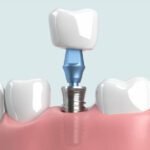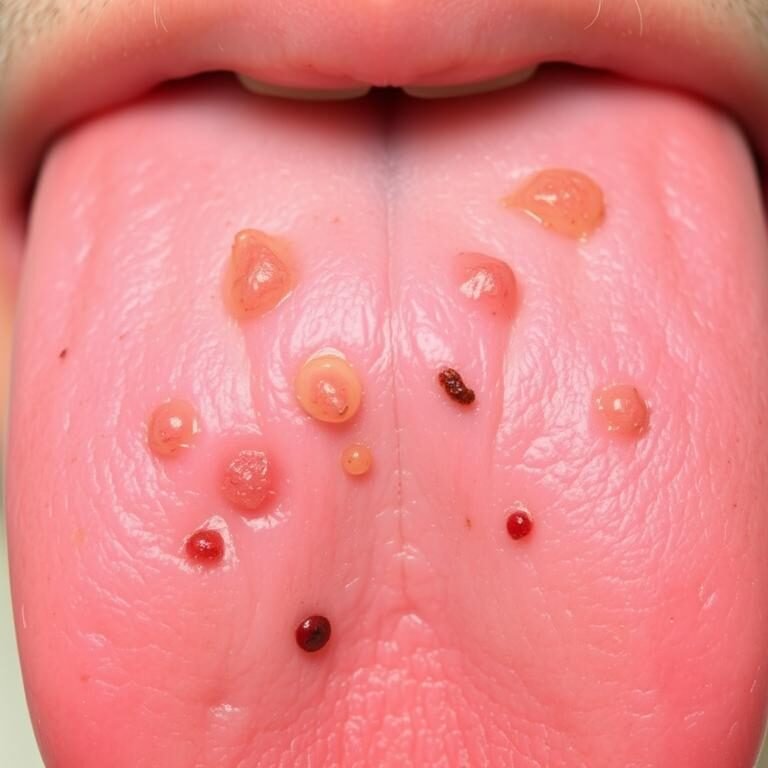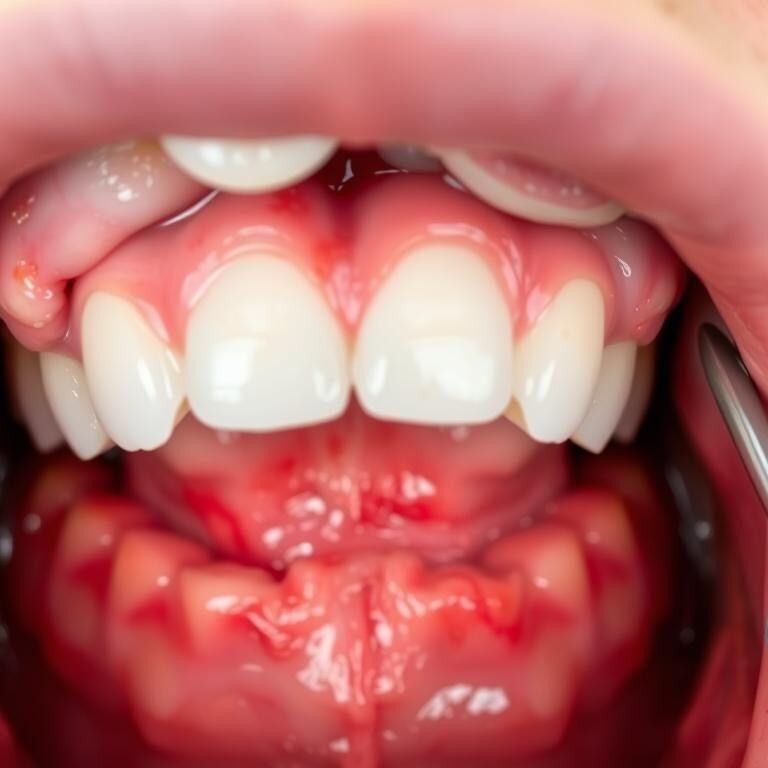Table of Contents
What is a dental bridge?
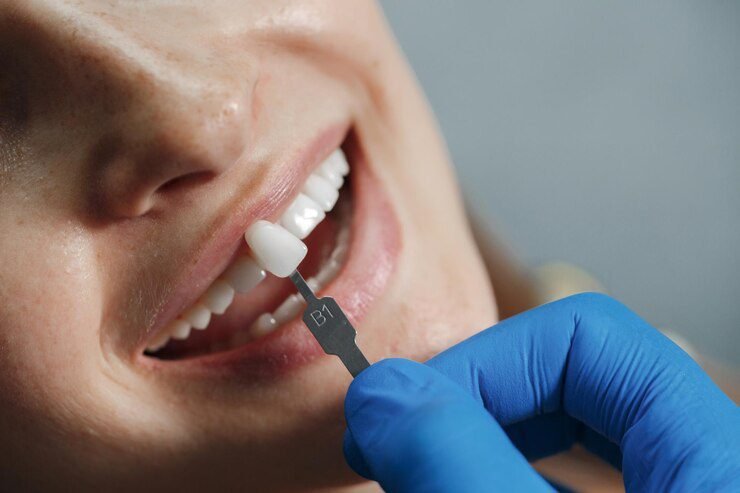
A dental bridge is a prosthetic device that is used to replace one or more missing teeth. It consists of two crowns that are placed on the natural teeth on either side of the gap, with a false tooth (or teeth) in between. The crowns act as anchors to hold the bridge in place, while the false tooth (or teeth) fills in the empty space.
Dental bridges work by restoring the function and appearance of missing teeth. They not only improve your ability to chew and speak properly, but they also help maintain the shape of your face and prevent the remaining teeth from shifting out of position. With a dental bridge, you can regain your confidence in your smile and enjoy a restored oral health.
How does a dental bridge work?
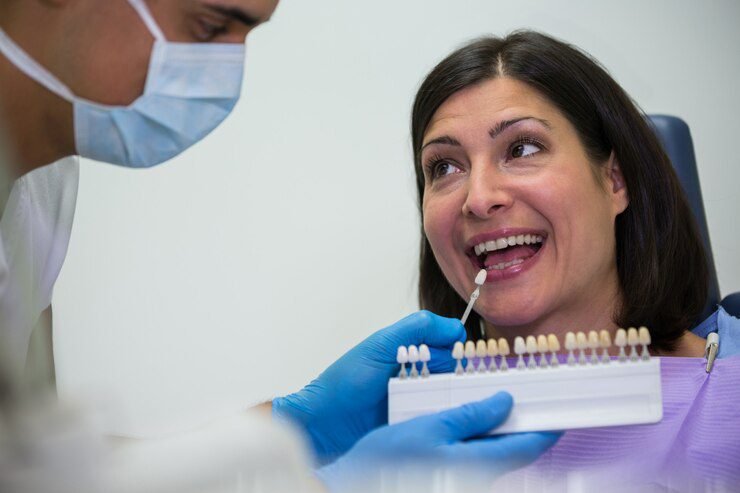
A dental bridge is a prosthetic device used to replace one or more missing teeth. It essentially “bridges” the gap between two natural teeth by anchoring the artificial tooth or teeth in place. The bridge consists of two or more crowns on either side of the gap, which serve as anchors, and the false tooth or teeth in between. These crowns are securely cemented onto the natural teeth adjacent to the gap, providing a stable foundation for the bridge.
The process of getting a dental bridge starts with a thorough examination and evaluation by a dentist. Once it is determined that a dental bridge is the right option for you, the dentist will prepare the teeth on either side of the gap by reshaping them to accommodate the crowns. Impressions of your teeth are then taken and sent to a dental laboratory, where the bridge is custom-made to fit your mouth perfectly. In the meantime, a temporary bridge may be placed to protect your teeth and gums. Once the permanent bridge is ready, it is carefully fitted and checked for comfort and aesthetics. The dentist will make necessary adjustments to ensure a proper fit and bite. Once everything is satisfactory, the bridge is permanently cemented into place, creating a natural-looking and functional solution to restore your smile and oral function.
Benefits of getting a dental bridge
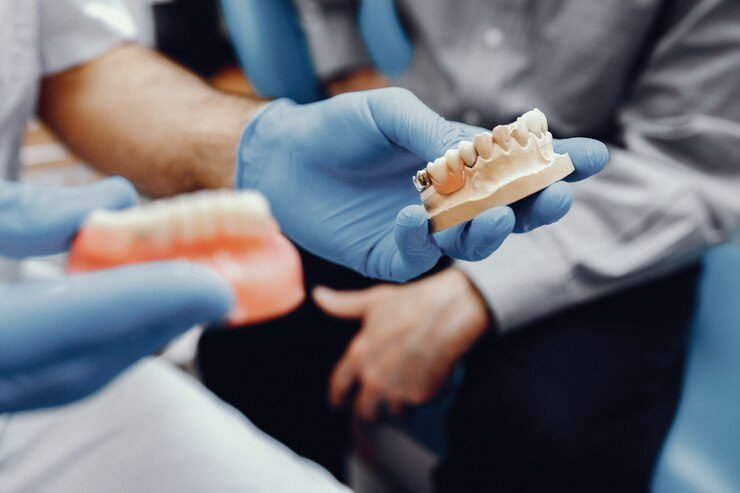
Dental bridges offer numerous benefits for those who have missing teeth or gaps in their smile. One of the main advantages is improved aesthetics. A dental bridge can effectively restore your smile by filling in the spaces left by missing teeth, enhancing your overall appearance and boosting your self-confidence. With a dental bridge, you can regain a natural and complete smile that feels and looks just like your own teeth.
In addition to the cosmetic benefits, dental bridges also provide functional advantages. They help to restore your ability to bite and chew properly, allowing you to enjoy a wider range of foods. This can have a positive impact on your overall nutrition and digestion. With a dental bridge, you can also prevent the remaining teeth from drifting and shifting into the open spaces, which can lead to further oral health issues down the line. By maintaining the proper alignment of your teeth, a dental bridge helps to promote a healthy bite and jaw function. So not only can a dental bridge enhance your appearance, it can also improve your ability to eat, speak, and maintain good oral health.
Is a dental bridge the right option for me?
When considering dental options, it is important to understand if a dental bridge is the right choice for you. A dental bridge is a popular restorative solution for replacing missing teeth. It consists of two or more crowns on either side of the gap, called abutment teeth, which anchor a false tooth in between, known as a pontic.
One key factor to consider is the condition of the surrounding teeth. In order to support the bridge, the abutment teeth must be healthy, strong, and have enough bone supporting them. If the surrounding teeth are decayed, weak, or already have dental work such as large fillings or crowns, they may not be suitable for supporting a bridge. In such cases, alternative options like dental implants or partial dentures may be recommended.
Another important consideration is oral hygiene and maintenance. Keeping your teeth and gums clean and healthy is crucial for the long-term success of a dental bridge. This involves regular brushing, flossing, and maintaining routine visits to your dentist for professional cleanings and examinations. If you have difficulty with oral hygiene or have existing gum disease, the health of your surrounding teeth and the durability of the bridge can be compromised.
In conclusion, while a dental bridge can be an effective solution for restoring missing teeth, it is essential to consult with your dentist to determine if it is the right option for your specific needs. Factors such as the condition of surrounding teeth, oral hygiene habits, and overall oral health should be carefully evaluated to ensure the success and longevity of the dental bridge.
Understanding the different types of dental bridges
Dental bridges are a common, effective solution for replacing missing teeth and restoring oral function and aesthetics. There are several different types of dental bridges that can be used depending on the specific needs and circumstances of the patient.
The traditional dental bridge is the most commonly used type. It consists of one or more artificial teeth, called pontics, that are held in place by dental crowns on the teeth adjacent to the gap. This type of bridge is typically made of porcelain fused to metal or ceramics, providing strength and a natural appearance.
Another type of dental bridge is the cantilever bridge, which is often used when there is only one adjacent tooth available to support the bridge. In this case, the pontic is anchored to the adjacent tooth on one side. While this type of bridge can be effective, it may put additional stress on the supporting tooth and may not be suitable for all patients.
Maryland bridges, also known as resin-bonded bridges, are a conservative option that involves bonding a metal or porcelain framework to the back of the adjacent teeth. The pontic is then attached to the framework, providing support and stability. This type of bridge is often used for replacing missing front teeth, as it offers good aesthetics.
Implant-supported bridges are another option for replacing missing teeth. This type of bridge is secured to dental implants that are surgically placed in the jawbone. Implant-supported bridges are known for their excellent stability, long-term success, and natural feel.
Each type of dental bridge has its own advantages and considerations. It is important to consult with a dentist to determine which type of bridge is most suitable for your unique needs and oral health situation. Understanding the different types of dental bridges can help you make an informed decision about the best option for restoring your smile and oral function.
The table below provides an overview of the different types of dental bridges commonly used in restorative dentistry, highlighting their unique characteristics and applications.
| Type of Dental Bridge | Description |
|---|---|
| Traditional Dental Bridge | Consists of one or more artificial teeth (pontics) held in place by dental crowns (abutments) placed on adjacent natural teeth. The crowns are cemented onto the natural teeth, serving as anchors to support the pontic(s) in between. Traditional bridges are suitable when natural teeth adjacent to the gap are healthy and strong enough to support the bridge. They are commonly used for single or multiple missing teeth in a row. |
| Cantilever Dental Bridge | Similar to traditional bridges but with the pontic(s) supported by a single dental crown on only one side of the gap, rather than both sides. Cantilever bridges are used when there is only one healthy natural tooth adjacent to the gap, making it unsuitable for traditional bridge placement. However, they may exert greater force on the supporting tooth and are not recommended for areas with significant biting forces. |
| Maryland Dental Bridge | Also known as resin-bonded or Maryland-bonded bridges, these bridges consist of a metal or porcelain framework bonded to the back of adjacent natural teeth using dental cement. The pontic(s) is attached to the framework and spans the gap. Maryland bridges are a conservative option as they require minimal alteration of adjacent teeth and are often used for front teeth or temporary restorations. |
| Implant-Supported Bridge | Utilizes dental implants as anchors instead of natural teeth to support the pontic(s). Dental implants are surgically placed into the jawbone, providing a stable foundation for the bridge. Implant-supported bridges are suitable when multiple adjacent teeth are missing or when the adjacent natural teeth are compromised. They offer excellent stability, durability, and long-term success but require sufficient bone volume for implant placement. |
The process of getting a dental bridge
When you decide to get a dental bridge, the process typically involves several stages. First, your dentist will conduct a comprehensive examination of your oral health to ensure that you are a suitable candidate for a dental bridge. This examination may include X-rays or other diagnostic tests to assess the condition of your remaining teeth and jawbone.
Once it has been determined that a dental bridge is the right option for you, the next step is preparing the abutment teeth. These are the teeth adjacent to the gap where the missing tooth will be replaced. Your dentist will carefully reshape these teeth to allow for the placement of crowns or caps. An impression of the prepared teeth will then be taken and sent to a dental laboratory, where your custom bridge will be fabricated. In the meantime, your dentist may provide you with a temporary bridge to protect the exposed teeth and gums.
During the final visit, your dentist will remove the temporary bridge and place the permanent dental bridge. They will ensure that the bridge fits properly and make any necessary adjustments to ensure a comfortable and natural bite. Once the bridge is securely in place, your dentist will provide you with instructions on how to care for and maintain your new dental bridge to ensure its longevity. It is important to follow these instructions and schedule regular dental check-ups to monitor the health of your bridge and prevent any potential complications.
What to expect during a dental bridge procedure
During a dental bridge procedure, there are several steps involved to ensure a successful outcome. Firstly, the dentist will administer a local anesthetic to numb the area surrounding the missing tooth and the adjacent teeth. This helps to minimize any discomfort or pain during the procedure.
Next, the dentist will prepare the adjacent teeth that will serve as support for the dental bridge. This involves removing a small amount of enamel from these teeth to create space for the bridge. The dentist will then take impressions of the prepared teeth, which will be used to create a custom-made bridge that fits securely in your mouth.
While the bridge is being fabricated in a dental laboratory, the dentist may provide you with a temporary bridge to protect the exposed teeth and gums. Once the permanent bridge is ready, the dentist will check the fit and make any necessary adjustments before cementing it into place. After the bridge is securely attached, the dentist will assess your bite and make any final adjustments to ensure proper alignment.
It’s important to note that the length of the dental bridge procedure can vary depending on individual factors such as the number of missing teeth and the complexity of the case. Your dentist will discuss the timeline and any potential discomfort or post-procedure care you need to be aware of. Overall, it is a relatively straightforward procedure that can significantly improve the look and function of your smile.
Caring for your dental bridge
Proper care and maintenance is essential to ensure the longevity and functionality of your dental bridge. By following a few simple guidelines, you can keep your bridge in optimal condition and minimize the risk of complications.
First and foremost, practicing good oral hygiene is crucial. Regular brushing and flossing, including cleaning under and around the bridge, will help prevent the buildup of plaque and bacteria. It is recommended to use a soft-bristled toothbrush and non-abrasive toothpaste to avoid damaging the bridge or the natural teeth supporting it.
In addition to proper hygiene, it is important to be mindful of the foods you consume. While dental bridges are designed to withstand normal chewing forces, it is advisable to avoid excessively hard or sticky foods that may put unnecessary strain on the bridge or cause it to dislodge. Chewing on ice or biting into hard candies, for example, can pose a risk to both the bridge and your natural teeth.
Moreover, regular dental check-ups are essential to monitor the overall condition of your dental bridge and address any potential issues early on. Your dentist will examine the bridge, perform any necessary adjustments or repairs, and ensure that the surrounding teeth and gums are healthy.
By following these guidelines and maintaining good oral hygiene habits, you can prolong the lifespan of your dental bridge and enjoy its many benefits for years to come. However, it is important to consult with your dentist for personalized advice and recommendations tailored to your specific needs.
How long does a dental bridge last?
A dental bridge is a prosthetic device that is used to replace one or more missing teeth. It is made up of two or more crowns on either side of the gap, known as abutment teeth, with false teeth, called pontics, in between. One common question that patients often ask is, “How long does a dental bridge last?” The lifespan of a dental bridge can vary depending on various factors, including the individual’s oral hygiene habits, overall oral health, and the type of bridge used. In general, a well-maintained dental bridge can last between 5 to 15 years or even longer with proper care.
Regular dental check-ups and cleanings are crucial for the longevity of a dental bridge. During these visits, your dentist will assess the condition of the bridge, check for any signs of decay or damage, and ensure that it is properly adjusted and fitting well. Good oral hygiene practices, such as brushing twice a day, flossing daily, and using antimicrobial mouthwash, can also help maintain the lifespan of a dental bridge. Additionally, avoiding habits like biting on hard objects or using teeth as tools can prevent unnecessary stress on the bridge and prevent it from becoming dislodged or damaged. Following these guidelines and having regular dental care can significantly extend the lifespan of a dental bridge and ensure a healthy and functional smile for years to come.
Potential risks and complications of dental bridges
Risks and complications associated with dental bridges are relatively rare but still important for patients to be aware of. One potential risk is damage to the abutment teeth, which are the natural teeth that serve as support for the bridge. The preparation of these teeth involves removing some of their natural structure to accommodate the bridge, which can weaken them and make them more susceptible to decay or fracture. Additionally, if the bridge is not properly fitted or cemented, it may put excessive pressure on the abutment teeth, leading to discomfort or even tooth loss.
Another potential complication is the development of gum disease or infection around the bridge. Proper oral hygiene, including thorough brushing and flossing around the bridge, is crucial to prevent bacterial buildup and inflammation. If gum disease or infection does occur, it can cause pain, swelling, and potentially compromise the stability of the bridge. Regular dental check-ups are essential to monitor the health of the bridge and address any issues before they become more serious.
It is important for patients considering a dental bridge to have a thorough discussion with their dentist about potential risks and complications. Dentists can help assess an individual’s oral health and determine if a dental bridge is the right choice, or if an alternative treatment option may be more appropriate. Patients should also be vigilant in maintaining good oral hygiene practices and keeping up with regular dental visits to minimize the risk of complications.
Alternatives to dental bridges
When it comes to replacing missing teeth, dental bridges are a popular option. However, they may not be suitable for everyone. Thankfully, there are alternative options available that can restore your smile and oral function. One alternative to dental bridges is dental implants. Implants are titanium posts that are surgically placed into the jawbone, providing a stable foundation for a replacement tooth. They look and feel like natural teeth and can last a lifetime with proper care. Another alternative is removable partial dentures. These dentures consist of replacement teeth attached to a gum-colored plastic base and are supported by metal clasps that attach to nearby natural teeth. They are a more affordable option but may not be as stable as dental bridges or implants. Ultimately, the best alternative for you will depend on your specific oral health needs and preferences.
Factors to consider when choosing a dental bridge
When it comes to choosing a dental bridge, there are several important factors to consider. One of the first things to think about is the type of bridge that is best suited for your specific dental needs. There are several different types of dental bridges available, including traditional bridges, cantilever bridges, Maryland bridges, and implant-supported bridges. Each type has its own advantages and considerations, so it’s important to consult with your dentist to determine which option is right for you.
Another important factor to consider is the overall health of your mouth and surrounding teeth. In order to support a dental bridge, the teeth on either side of the gap will need to be healthy and strong enough to anchor the bridge. Your dentist will carefully evaluate the condition of these teeth to determine if they are suitable for bridge placement. Additionally, your oral health habits, such as proper brushing and flossing, will play a role in the longevity and success of your dental bridge. Taking the time to consider these factors will help ensure that you make an informed decision about your dental bridge options.
Cost of a dental bridge and insurance coverage
The cost of a dental bridge can vary depending on several factors, including the number of teeth being replaced, the materials used, the complexity of the procedure, and the location of the dental practice. On average, the cost of a dental bridge can range from $500 to $1,200 per tooth. This does not include any additional procedures that may be necessary, such as tooth extraction or root canal treatment.
Insurance coverage for dental bridges can also vary. Some dental insurance plans may cover a portion of the cost, while others may not cover it at all. It is important to check with your insurance provider to understand what is covered under your specific plan. Additionally, insurance plans may have limitations or waiting periods before coverage for dental bridges is available.
It is worth noting that while dental bridges can be a significant investment, they offer a number of benefits. They can restore the function and appearance of your smile, improve your ability to chew and speak properly, prevent adjacent teeth from shifting, and help maintain the structure of your face. When considering the cost of a dental bridge, it is important to weigh the long-term benefits against the financial investment.
Finding the right dentist for your dental bridge
Finding the right dentist to carry out your dental bridge procedure is crucial in ensuring the best outcome for your oral health. When it comes to such a significant dental procedure, it is important to choose a dentist who has expertise and experience in restorative dentistry.
First and foremost, start by looking for dentists who specialize in prosthodontics or cosmetic dentistry. These dentists have advanced training in dental restorations and are well-versed in the latest techniques and materials used for dental bridges. Additionally, it is important to review the dentist’s credentials and qualifications to ensure they are licensed and certified to perform dental bridge procedures.
Furthermore, consider seeking recommendations from trusted sources such as friends, family, or your general dentist. Reviews and testimonials from previous patients can provide valuable insights into the dentist’s skills and the overall patient experience. It is also wise to schedule a consultation with the dentist to discuss your specific needs and concerns. Use this opportunity to ask questions about their experience, success rate, and any potential complications or risks associated with the procedure.
Remember, finding the right dentist for your dental bridge is essential for a successful outcome. Make sure to do thorough research, seek recommendations, and consult with potential dentists to ensure you are making an informed decision in choosing a skilled professional to meet your dental needs.
Real-life stories: Patient experiences with dental bridges
Patient experiences with dental bridges can offer valuable insights into the benefits and outcomes of this dental procedure. Patricia, a 45-year-old woman, shares her positive experience with dental bridges. She had been missing several teeth for years, which impacted her ability to chew and speak properly. After consulting with her dentist, she decided to get a dental bridge to restore her smile and oral function. Patricia reported that the procedure was relatively painless, and she was immediately impressed with the natural appearance of her new dental bridge. She expressed how her confidence was restored, and she can now enjoy eating her favorite foods without any discomfort. Patricia’s story highlights the significant improvement in both aesthetics and functionality that dental bridges can provide.
John, a 60-year-old man, also shares his experience with dental bridges. He had lost multiple teeth due to age-related issues and had difficulty eating and speaking clearly. After getting a dental bridge, John noticed a remarkable improvement in his ability to chew and speak without any difficulties. He emphasized how the bridge felt comfortable and secure in his mouth, allowing him to enjoy a wide range of foods that he had previously avoided. John’s story showcases the positive impact of dental bridges on oral functionality and overall quality of life for patients, particularly those experiencing age-related tooth loss.
These real-life experiences highlight the transformative effects of dental bridges for individuals with missing teeth. While every patient’s experience may vary, their stories contribute to our understanding of the benefits and positive outcomes of dental bridges.
The impact of a dental bridge on your smile and oral function.
A dental bridge can have a significant impact on both your smile and oral function. Whether you have missing teeth due to decay, injury, or other dental issues, a bridge can help restore your smile and improve your ability to speak, chew, and maintain proper oral hygiene.
One of the main benefits of a dental bridge is the aesthetic improvement it provides. By filling in the gaps left by missing teeth, a bridge can give you a complete and natural-looking smile. Not only does this boost your self-confidence and improve your overall appearance, but it can also positively impact how others perceive you.
In addition to the cosmetic benefits, a dental bridge can also restore your oral function. When you have missing teeth, it can be difficult to chew certain foods and enunciate words properly. By replacing these teeth with a bridge, you can regain the ability to eat a wider variety of foods and speak more clearly. This can greatly enhance your quality of life and make everyday activities much easier.
Overall, a dental bridge can have a transformative impact on your smile and oral function. It can restore your confidence, improve your appearance, and allow you to enjoy the simple pleasures of eating and speaking without difficulty. If you are considering a dental bridge, speak with your dentist to determine whether it is the right option for you and to discuss the specific benefits it can provide in your unique case.
How long does it take to get a dental bridge?
The process of getting a dental bridge typically requires multiple visits to the dentist. The exact duration can vary depending on factors such as the complexity of the case and the type of bridge being used. On average, it may take a few weeks to complete the entire process.
Will a dental bridge affect my ability to eat and speak?
No, a properly fitted dental bridge should not significantly impact your ability to eat or speak. In fact, it can actually improve your oral function by restoring missing teeth and helping to maintain proper alignment.
Can I still brush and floss with a dental bridge?
Yes, it is important to maintain good oral hygiene even with a dental bridge. You can brush and floss your teeth as you normally would, paying extra attention to clean around the bridge area using floss threaders or special brushes recommended by your dentist.
Can I have a dental bridge if I have gum disease?
In most cases, it is necessary to treat any existing gum disease before getting a dental bridge. Your dentist will evaluate your oral health and recommend appropriate treatment options to ensure the success of the bridge.
Can a dental bridge be repaired if it gets damaged?
Depending on the extent of the damage, a dental bridge can sometimes be repaired. It is important to contact your dentist as soon as possible if you notice any issues with your bridge so that they can assess the situation and determine the best course of action.
Will a dental bridge feel uncomfortable or unnatural?
Initially, it may take some time to get used to the sensation of a dental bridge in your mouth. However, with proper adjustment and a well-fitted bridge, most people find that it feels comfortable and natural, allowing them to eat, speak, and smile with confidence.
Can a dental bridge be replaced if I want a different type or design?
Yes, a dental bridge can be replaced if you desire a different type or design. It is important to discuss your preferences with your dentist, who can guide you through the process and help you choose the best option for your individual needs.
Is it possible to get a dental bridge if I have missing teeth on both sides of my mouth?
Yes, there are different types of dental bridges available that can accommodate missing teeth on both sides of your mouth. Your dentist will evaluate your specific case and recommend the most suitable option for you.
Will a dental bridge affect the appearance of my smile?
A dental bridge is designed to blend in seamlessly with your natural teeth, enhancing the appearance of your smile by filling in gaps caused by missing teeth. It can greatly improve your smile’s aesthetics, giving you a more complete and confident look.
Can I still have regular dental check-ups with a dental bridge?
Yes, regular dental check-ups are important to ensure the health and longevity of your dental bridge. Your dentist will continue to monitor the condition of your bridge during routine visits and address any concerns that may arise.



